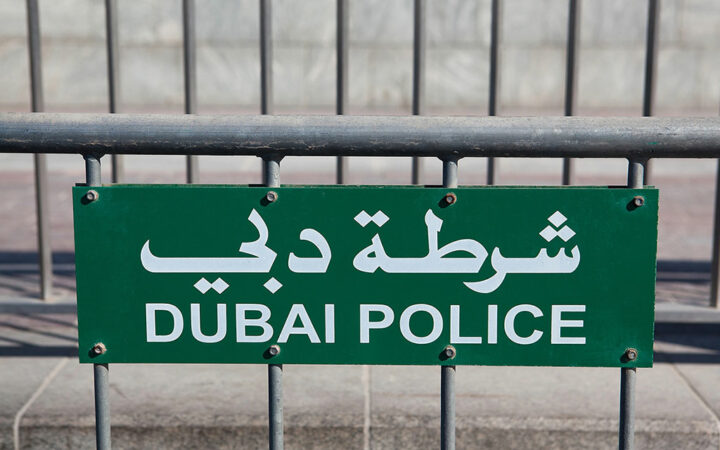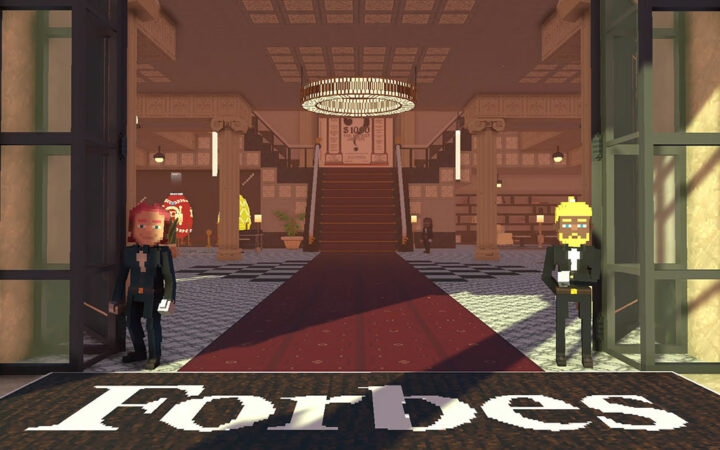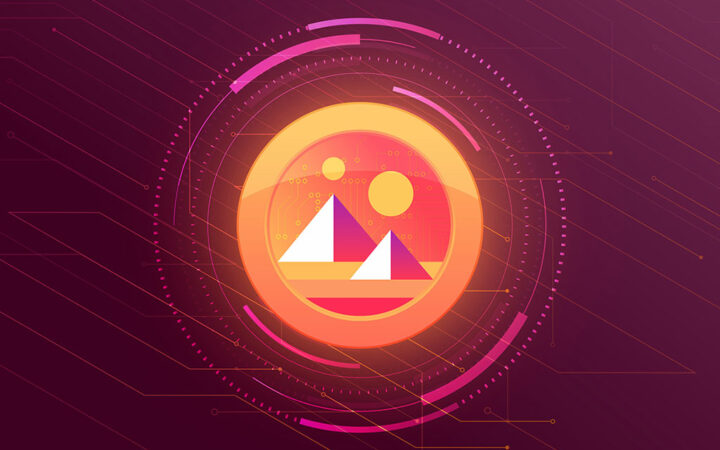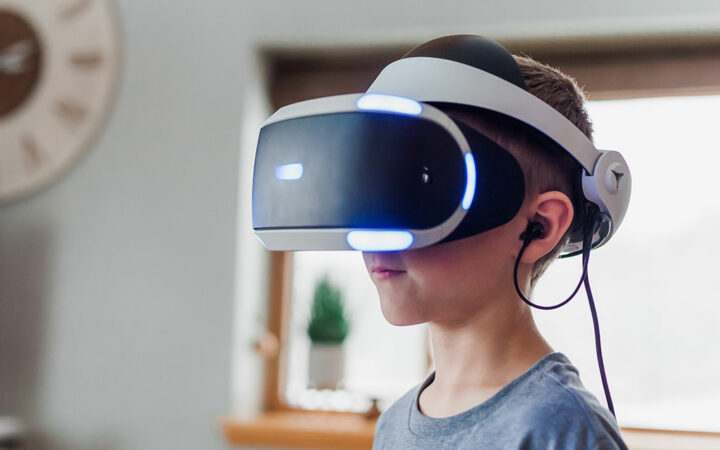From March 30 to March 31, 2018, the Blockchain Technology and Application Summit (BTA) — hosted by CSDN and Huoxin24, and co-hosted by Cyberledger, PDJ Education, Blockchain Lemon, and TokenSky — was held at the Sheraton Hotel in Beijing, China.
As one of the most popular industry topics at the moment, blockchain, with its subversive technology concept and the influence it is exerting on various industries, is attracting the attention of global technology communities, investors and entrepreneurs.
In order to broaden understanding of the technical essence behind the blockchain and the underlying technology, leaders of more than 80 blockchain technology companies as well as top commercial investors of more than a 100 blockchains were invited to this conference. The lively discussions on the development trends of the blockchain technology that took place gave those present the opportunity to fully understand this new technological ecology.
As one of the important guests of this conference, Dr. Shen Jie, chief scientist of SDChain, and chief editor of the International Standard for Internet of Things Reference Architecture (IoT RA), gave a keynote speech on the convergence of the Internet of Things and blockchain.
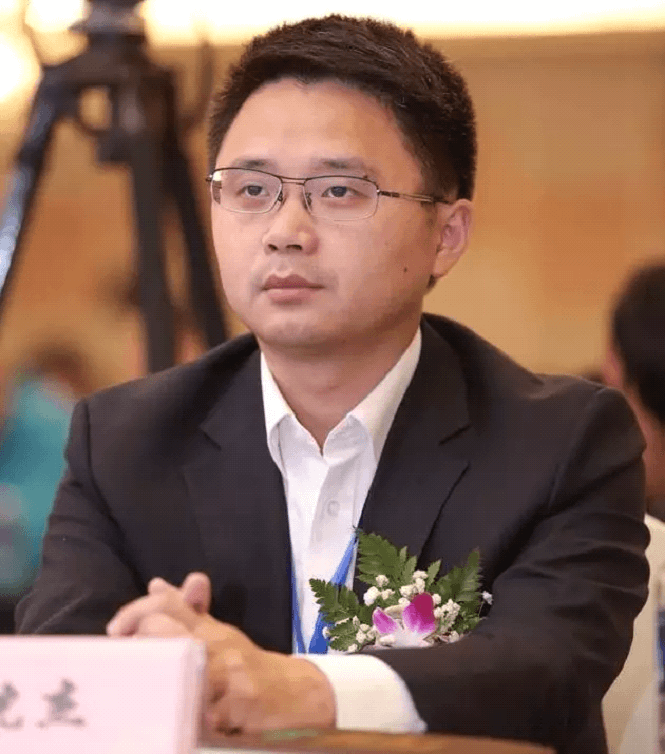
Dr. Shen, Chief Scientist of SDChain. Photo: SDChain
Dr. Shen, who has 16 years of experience in the Internet of Things industry, began to get involved in the blockchain three years ago. He found that the integration of the Internet of Things and the blockchain will be the best paradigm for both parties. He has also focused on how to integrate the “six-domain model” of the Internet of Things with the blockchain and promote the project realization of the industry. Dr. Shen explained how he viewed the relationship between the Internet of Things and the blockchain from several viewpoints.
Dr. Shen said that the trend we are currently seeing is that although there are already “applications” such as Bitcoin which demonstrate the vigorous development of the blockchain field and have laid some preliminary foundations for our digital economy, there are still serious problems to overcome.
One problem, he explained, is that so far only a large number of cryptocurrencies have been released on the blockchains. So there is still something lacking. That is, there is no corresponding digital product in the digital ecology of the chain.
He said that, for example, real currencies were born (meaning the birth of money) in response to the promotion of trade between diverse communities and the need to have some kind of standard trading behavior. In real life, there are currencies corresponding to commodities. However, in the virtual world, cryptocurrencies are first created. There are yet not a large number of digital assets and digital products that can be traded. So at present, the quest is on for how to promote real valuable digital assets into the blockchain ecology so that it can promote the development and prosperity of the digital economy and further activate the vitality of the real economy.
From this perspective the question is, how can we promote the prosperity of the digital ecology in a real sense? A big source in the future will be generated by the Internet of Things. The most important role of the Internet of Things is to first set up a bridge between the physical world and the virtual world. Through a large number of terminals, we can perceive the behavior of all things in the world and recognize the diversified behavior of people, things and concepts and then map a large amount of data into the digital space.
When Dr. Shen was engaged in research on the Internet of Things in the early years, it was actually relatively difficult before the blockchain research came along. Now we have several big challenges, one of which is, how to establish and protect the credits and interests of various entities in the IoT application ecosystem. We need to know how we should use data to deliver its value and guarantee its credit after spending so much money to collect it.
From this perspective, once the Internet of Things is linked to the blockchain, the Internet of Things can capture different entities and behavioral data, transform credits into digital assets through blockchains, and further promote and activate digital assets through blockchain-related equity vouchers. The transaction, while promoting the subject’s equity incentives and the transfer efficiency of physical assets, will continue to promote the interaction between the virtual space and the physical space, and continuously promote the ecological prosperity. This is the significance of the integration of the Internet of Things and the blockchain.
In addition, a token used as a circulatory, decentralized, and encrypted digital rights and interests certificate in the digital world, can better drive the enthusiastic cooperation between different subjects in the ecology, and at the same time, it can ensure the circulation and realization of equity among different subjects.
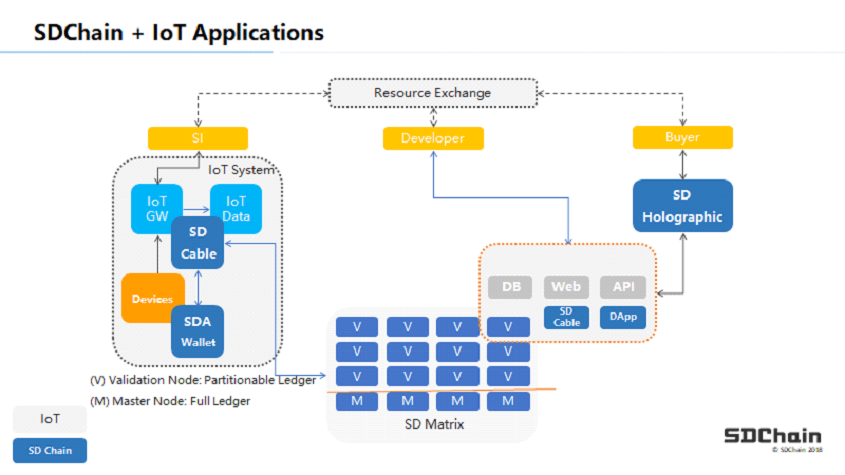
Convergence of IoT and Blockchain. Photo: SDChain
Moreover, Dr. Shen pointed out, that we have to face the reality that the Internet of Things is not just simple technology and equipment, or a network of connected devices. It is a very complex and ecological type of concept, and its convergence with industry can’t be realized suddenly. Back in 2002, he began to engage in research related to the Internet of Things. In 2009, the Internet of Things was developed as a new industry at the national strategic level. However, even in 2018, the realization of the Internet of Things is still in the process of early development.
There are some very complex factors involved in the Internet of Things, and in order to promote a complex ecology, it is often necessary to have a clear top-level architecture design. We have learnt this over many years of research. Currently, things such as the Internet of Things chip, sensors, RFID, operating systems, cloud platforms, network communications, expert algorithms, and artificial intelligence are all well-founded and mature, so we must ask why the Internet of Things still remains in the same stage of early development.
We must also ask why the development is so slow. The answer to this is because the Internet of Things is not just a technical existence, but it is something that is integrated with everything in the industry. There are many cross-border places in this industry. When a cross-border is involved, we often find that people who understand the technology do not understand the industry, and people who understand the industry do not understand the technology. At this time, we need a top-level design to ensure the effectiveness of the entire system.
Considering the top-level design of the Internet of Things is of vital importance. From the perspective of the Internet of Things, the application of the Internet of Things can be said to be omnipresent. It is everywhere, including in the daily life of food and clothing, agriculture, forestry, fishery, animal husbandry, security, fire protection, supply chain finance, public relations, and more. When we were trying to improve the efficiency of interacting with peripheral things, we have discovered a lot of problems in the process.
In the future, when a large number of devices are used as intermediaries between people and things, necessitating a trusted relationship between objects and people and the data obtained, we have to ensure that there is a credible and efficient transmission of value. In addition, we need to think deeply and clearly on how to stimulate and protect the rights and interests of the many subjects of the Internet of things.
For the extensive application of the Internet of Things to cover the depth of the market, there is a need to be very imaginative. The market business model of the Internet of Things can basically be divided into three levels.
For the earliest batch of Internet of Things companies, it may be relatively simple to think that they just produced some sensors and equipment, and integrated some informatization projects. This was the initial business model.
The second-level model provides services for users and solves some application-level problems through the collected data. However, even with the collected data, we found that the cost of using the IoT is still very high, and after amortization of these costs, the cost of data services is still very expensive, so the scale of development is limited.
We believe that to the third level business model, there will be the substantive development of the physical and digital economic value of the connected “objects”.
The first common mistake we need to correct is the fact that the Internet of Things is not connected to devices such as sensors. Instead, it is connected to the “objects” through such devices. “Materials” refers to all things in the physical world. The point is very important, otherwise the Internet of Things can’t be realized. McKinsey has a group of data that is very interesting. By 2025, the number of things connected to the Internet of Things will reach 25 billion, and the output value will reach 6 trillion US dollars. The associated economy will go up to 36 trillion US dollars. The associated economy here refers to everything involved in connecting different things through the Internet of Things and enlarging the value of the entire industry.
Faced with such a large market and in terms of such a wide range of applications, it is indeed very attractive, but the problem we have to face is that the architecture of the Internet of Things needs to be built from scratch if we simply apply the traditional Internet. The technical framework has been unable to adapt to the complex ecological construction of the Internet of Things according to a purely hierarchical approach.
Even with the use of a three-tier architecture, we have found that there are still significant limitations. The idea of layering only exists in peer-to-peer communication, and it is better to cut the hierarchical classification of interactions at different levels. However, in the Internet of Things, the most important thing is to fully integrate with the entire industry ecology, which is a completely different matter, leading to the full integration of the system.
In 2013, we did in-depth and brand-new thinking and came up with a new design. We changed the original method of constructing the system for the Internet of Things using a layered approach. We used the domain approach. We then proposed a “six-domain model” of the Internet of Things. Standards are used to guide the overall construction of the Internet of Things ecosystem in different industries.
In 2016, it became the national standard of our country (China) and it has been published. At the same time, because of the study of this standard, we preceded the United States and other developed countries. Therefore, China has also taken the lead in formulating the ISO/IEC Internet of Things reference architecture standards. After years of competition and negotiation with other countries, this standard will be ready later this year. This standard will be released in the second half of this year.

ISO / IEC 30141 IoT Reference Architecture. Photo: SDChain
Why is it called the Internet of Things “six-domain model”? The Internet of Things is ecologically located in a certain industry. For example, agriculture, industry, health care, logistics, and so on—in fact, the entire ecological environment, with all its many complex elements—need to be integrated. It is often easy to overlook the original design, because some people are concerned about the Internet, some people focus on communication, some people pay attention to the cloud platform, some people pay attention to the embedded operating system, and some people look at the use of technology from the application point of view. The result is that most systems of the Internet of Things so far have been difficult to deploy widely.
After creating a sustainable business model and a large amount of sorting, it is found that the top-level framework design of the Internet of Things in any industry can basically be divided into six parts. After sorting the industry ecology according to the six parts — basically the big elements can be categorized clearly under this framework — we have the possibility and foundation to further refine its scene and business model, otherwise it is missing something.
First of all, we have to consider the “User Domain”. That is, we need to determine which users of an industry’s Internet of Things system should serve and what needs to be addressed. In this domain, there is a strong correlation between different user entities. For example, a farmer raising chickens not only needs to buy the feed from feed companies, but also needs to borrow money from the bank, buy breeding insurance, and selling chickens at higher prices.
The second is the “Target Domain”, that is, we have to determine the “object” of the connection. We have to confirm what the problems and the characteristics are. In the case of raising chickens, we have to clarify the characteristics and problems of this chicken target object in the breeding process, such as determining whether the chicken is walking enough steps, whether its health environment is better, and how to determine who has responsibility during slaughter of the chicken and transportation.
The third is the “Sensing Control Domain”, which means what kind of technical assets and equipment systems we can use to achieve the first connection to the “object” in the target domain according to user needs. In general, we can use sensors, such as the pedometers on a chicken’s foot, or we can also use the two-dimensional code, such as the tracing source code on the ring of a chicken’s foot, and the embedded module, such as the feeding equipment for the control of the chicken farm to connect the equipment. It can also work independently.
The fourth is the “Service Domain”, which obtains a large amount of data about objects by sensing the devices in the control domain, equal to the number of chickens we have reconstructed in the virtual space. Based on these data, we can establish a monitoring service for breeding. The platform can also establish a service platform for aquaculture finance and insurance, as well as a traceability e-commerce sales platform for running chickens. These platforms can provide corresponding services for different users through big data analysis and industry expert analysis.
The fifth is the “Operation and Governance Domain”. On the one hand, we need to ensure the safety, reliability and precision of the equipment monitoring the chickens. We also need to ensure that the management of chickens is in line with the state of aquaculture or related industry requirements.
Sixth, is the “Resource Exchange Domain”. Different systems or devices need to exchange their own data to improve and enhance the efficiency and content of services. They are the inter-subjects of different domains, or even third-party entities (including third-party payment tools, third-party credit information systems, third-party social platforms, etc.) Finally, we know how to achieve a commercial collaboration mechanism to jointly promote the improvement and development of the entire ecosystem.
According to the characteristics of different industries and scenarios, through the definition and combining of these six domains, we can basically determine the system architecture and business comprehensiveness of an Internet of Things industry ecosystem, and at the same time, lay the foundation of its location and value of position for the different subjects in this ecosystem.

‘Six-Domain Model’ as International Standard. Photo: SDChain
Generally speaking, every industry can build a new ecosystem of the Internet of Things in such a way. With the framework of a six-domain model, the integration of the Internet of Things and blockchain has a large basic framework that can be established. If the Internet of Things is built on the original traditional Internet it would be like driving a sports car on a dirt road in the country, where the pits in the road and the uneven surface would not suit the performance of the car, and it would not run well. Having a blockchain is equivalent to changing this dirt road into a concrete highway, so the Internet of Things can run at high speed on the blockchain.
Since the framework for the integration of the Internet of Things and blockchain has been clarified, what are the unique aspects of blockchain optimization design for the Internet of Things? Is Ethereum or another method available? Dr. Shen thinks we should have the characteristics of the bottom line of the Internet of Things. Considering the characteristics of multi-agents (people, equipment, platforms, etc.) in the IoT application ecosystem to make overall optimization, DAG designed for high concurrency is only one of the features.
In fact, the real feature is the diversification of the Internet of Things. The focus of the blockchain optimization into the diversified business ecosystem of the Internet of Things (IoT) has created a significant demand and scenario foundation for the blockchain to break away from the pure route of cryptocurrency.

The world’s first standardized framework for convergence of Internet of Things and Blockchain technology. Photo: SDChain
According to the just-mentioned architecture, we first serve customers. We can distinguish Internet of Things customers according to just six categories, including users of IoT applications, users of platforms, and users of third-party cooperation. The user of the physical asset, the user of the operation and maintenance, and the most important user of the device, that is to say, the future device, platform, individual, or enterprise will become the user entity in the blockchain. Such a diverse range of customers is the target we are aiming for at the Internet of Things.
From this perspective, we need to do a holistic optimization. We have to consider whether it is a consensus algorithm, P2P communication, encryption algorithm, scalability, or cross-chain design that needs to be integrated around the characteristics of the application of Internet of Things ecology to realize optimization.
At present, in order to break down some of this work, we think that we should do a layered design of the entire underlying blockchain. From its application support, the development of APIs and SDKs, to service levels, core levels, and technical design, we may separately define the level of each of our functions and the direction in which it optimizes performance.

SDChain System Architecture. Photo: SDChain
This is an initial product architecture diagram of SDChain 1.0 that we have built around such a framework. At present, we have released a beta version of the underlying public chain, from the underlying core to the Rest, to the SDK package, and to the browser application development. Currently, SDChain has made many optimizations in terms of consensus mechanisms, multi-asset issuance, asset transactions, smart contracts, and system performance and number of nodes. The consensus algorithm is based on modified PBFT and we established a new SDFT that combines high concurrency and consistency.
On this basis, further tiering and slicing optimization will be carried out in the future to ensure the scalability and operational efficiency of SDChain. At present, the early consensus node is structured by the main affiliates. After the entire public chain goes online, we will open up the consensus of the main node. It is now a beta version. It will be officially launched in August this year.
In the application case, we have accumulated a large number of application partners, which are currently being promoted gradually. Among them, agricultural IoT and food traceability will become an important area for early-stage launching. Others that are being actively promoted include supply chain finance, smart manufacturing, environmental protection, and distributed energy.
Now it is more practical to use some scenarios, like a very effective method in agriculture, to use IoT + blockchain to promote the financial development of agricultural science and technology. In agriculture, especially in China, the peasants are rather miserable. Without collateral, our land resources, our homesteads, and our agricultural products cannot be mortgaged for financial services; therefore it is more difficult for farmers to develop.
With the Internet of Things and blockchain, we can use data to help farmers establish the entire financial information scene and mechanism, that is, through such data; we can establish mutual trust with banks and insurance companies or third-party investors. Credit information drives financial input into agriculture.
There is much room for imagination in the development of agriculture through technological means. For example, the Internet of Things together with blockchains will enable the traceability of agricultural products and guarantee of food safety. They also open up different links to production, circulation, consumption, and data sharing between different entities, making the data gathered truly credible.
With some basic services such as efficient agricultural supervision and traceability of agricultural resources, it can in fact help lay a solid foundation for the entire agricultural system, and it can produce a variety of applied ecology in other consumer fields or fashion fields. From this point of view, the significance of integrating the Internet of Things and blockchain is very large.
In our true sense, it can help our industries, especially some traditionally backward industries, and help them to make very big improvements and developments. It can also produce diversified application ecology. We have designed a relatively large expansion, which can support the release of different application sub-chains of the Internet of Things, as well as the gradual improvement of the performance of the sub-chain hierarchy and fragmentation.

‘FogChain’ optimized for Seamless Business Versatility. Photo: SDChain
We can use ideas like six domains to help each industry design the overall architecture of the Internet of Things and blockchain. Medical treatment, manufacturing, or supply chain, each industry can define the main body of its six domains. The support of the underlying blockchain and the application of the license can go further than the original to accelerate ecological innovation through faster and more efficient development.
The beta version of the SDChain main chain has now been established with a number of test consensus nodes in China, the United States, Australia, and Singapore. Finally, simply put, if we can truly integrate the Internet of Things with the blockchain, we can promote the development of the convergence of the digital economy and the physical society.
Disclaimer: Coinspeaker is committed to providing unbiased and transparent reporting. This article aims to deliver accurate and timely information but should not be taken as financial or investment advice. Since market conditions can change rapidly, we encourage you to verify information on your own and consult with a professional before making any decisions based on this content.

Please check out latest news, expert comments and industry insights from Coinspeaker's contributors.
